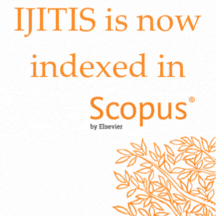Predicting Vitamin D Levels Using Ordinal Logistic Regression, Gaussian Process Regression and ARIMA: A Comparative Study
DOI:
https://doi.org/10.15157/ijitis.2025.8.4.911-936Abstract
Vitamin D deficiency is a common health condition that increases the risk of metabolic, cardiovascular, and musculoskeletal disorders. Many individuals are unaware of their vitamin D deficiency. In this work, we develop and present three complementary machine learning models to explore Vitamin D levels based on regular healthcare data. The dataset consists of anonymized patient records with demographic features, clinical indicators, and laboratory measurements of serum 25(OH)D. It is taken from a healthcare setting and pre-processed to eliminate absent or inconsistent results. Vitamin D level variables were transformed into ordered, clinical categories: severe deficiency, deficiency, insufficiency, and sufficiency. However, for regression and time-series forecasting, the original continuous concentration, measured in ng/mL, was preserved together with monthly averages. A proportional odds Ordinal Logistic Regression model was used to figure out Vitamin D status. The best overall performance was an accuracy of 0.77, a macro recall of 0.76, and an F2-score of 0.78. Most of the mistakes were made between categories that were next to each other. We utilized Gaussian Process Regression to predict continuous Vitamin D concentration. The results were R² = 0.79, MAE = 2.3 ng/mL, and RMSE = 3.4 ng/mL, which means that the model can get close to laboratory values with clinically acceptable error. To capture temporal dynamics, an ARIMA model was fitted to monthly mean Vitamin D levels and showed the best performance with R² = 0.82, MAE = 2.0 ng/mL and RMSE = 3.1 ng/mL, accurately recreating the observed seasonal pattern.Downloads
Published
2025-11-18
How to Cite
Lashi, E., Lashi, K., Kuba, H. K., Annuk, A., Itellari, A., Alkattan, H., & Abotaleb, M. (2025). Predicting Vitamin D Levels Using Ordinal Logistic Regression, Gaussian Process Regression and ARIMA: A Comparative Study. International Journal of Innovative Technology and Interdisciplinary Sciences, 8(4), 911–936. https://doi.org/10.15157/ijitis.2025.8.4.911-936
Issue
Section
Articles
License
Copyright (c) 2025 Edlira Lashi, Klea Lashi, Hasanien K Kuba, Andres Annuk, Ambrozia Itellari, Hussein Alkattan, Mostafa Abotaleb

This work is licensed under a Creative Commons Attribution 4.0 International License.








